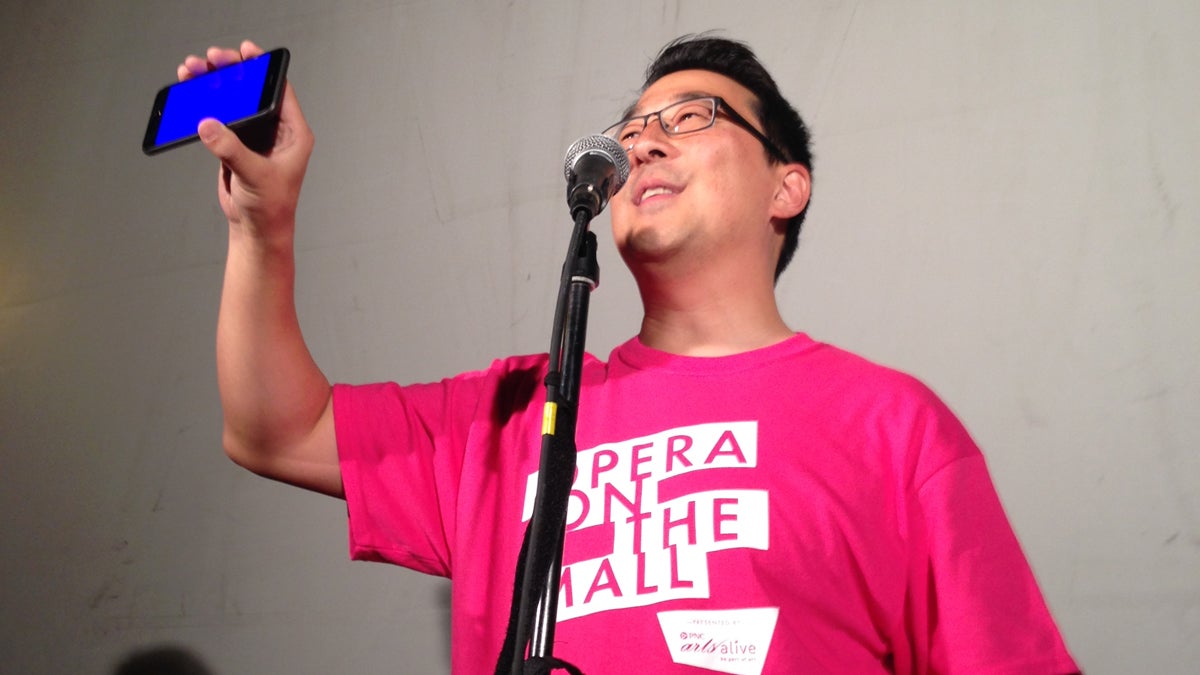Fusing art with technology – an experiment in developing opera for the 21st Century
Listen
(Todd Bookman/for The Pulse)
Can an art form like opera, almost synonymous with the past, take advantage of modern technology, like the internet and smartphones?
Can an art form like opera, almost synonymous with the past, take advantage of modern technology, like the internet, smartphones and wireless communication?
That’s the question engineer Youngmoo E. Kim asked himself when he decided to take a sabbatical from his position directing Drexel University’s ExCITe Center to bring his technological expertise to Opera Philadelphia, an organization dedicated to “innovat[ing] and developing opera for the 21st Century.”
“There’s a perception that opera is somewhat of an antiquated form to some people, that when they go see an opera production, particularly one of the, let’s say, canonical works of the 19th Century, that you feel like you’re going backwards in time,” said Kim. “What we’re aiming to do at Opera Philadelphia is not only embrace tech… artistic innovation is tied directly to technological innovation.”
Kim’s first foray was visible at an ‘Opera on the Mall’ event last Saturday. Opera Philadelphia held an outdoor screening on Independence Mall of the “Barber of Seville,” with recordings projected onto massive screens suspended above a crowd of some 6,000 onlookers. His team wrote a simple web app that changed the color of audience member’s smartphone screens in unison.
“I think it really helped the audience come together,” said Kim. “Everybody carries so much tech around with them now, and to then say, the first thing when they walk in the door, to say “turn that off”… that seems a little bit anachronistic.”
Kim says the goal of fusing art and technology is something that resonates for him on a personal level.
“Music and technology have always been parts of my life, I just couldn’t decide which one I love more,” said Kim, an engineering & music double major, who also holds a degree in vocal performance practice. “So I’ve continued to do both.”
There has always been a natural attraction between the two fields, according to Kim. Since at least the 18th century, opera companies have employed pyrotechnics, trap doors, and lighting effects to enhance performances. As Kim puts it, “using new technology isn’t new.”
So what did audience members think?
Jason Reeves, from Philadelphia, was in attendance that night.
“I didn’t really expect it, it was kind of cool though to have some audience interaction,” said Reeves. “You feel like you’re kind of part of the show.”
Some participants said they missed the cue to turn on the app, but Kim (who noted that cues were intentionally subtle to avoid interfering with the opera itself) says it’s all part of the experiment. “The technology to do that on a scale of hundreds or even thousands of phones and to have everything work right, in all those different conditions, of course that’s difficult,” he said. “The impact might not have been as strong as we originally envisioned, but that’s okay. We wanted to try these things, we wanted to push the boundaries and…we’ll continue to push those boundaries.”
Kim says he doesn’t “want to be to be a one-off project” and plans to work with opera composers to integrate more technological components into new musical works — which take about five years to produce on average. “The things we are working on really interface with every step of that production process.”
WHYY is your source for fact-based, in-depth journalism and information. As a nonprofit organization, we rely on financial support from readers like you. Please give today.




